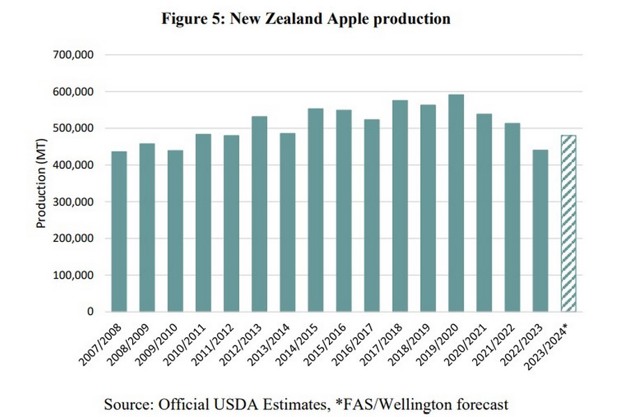New Zealand's apple planted area in the 2023/2024 market year (MY) is forecast to be 9,200 hectares (ha), a substantial drop from 11,000 ha at the start of the 2022/2023 MY. This is due to the impacts of Cyclone Gabrielle, which brought large-scale floodwaters, silt, debris, wind, and surface flooding to the primary apple growing regions of Hawkes Bay and Gisborne. Orchards in this region were damaged so severely that tree stocks were not viable for future production or were destroyed completely. FAS/Wellington is forecasting apple production in the 2023/2024 MY to be 480,000 metric tons (MT).

This represents a predicted recovery due to the following - the El Niño weather pattern, availability of seasonal labour, and implementation of farm system innovations. Domestic demand for pears in New Zealand continues to outstrip domestic supply. As a result, New Zealand imports fresh pears annually to meet its market demand.
Exports 2023/2024
FAS/Wellington forecasts exports for 2023/2024 MY to be 330,000 MT. Although well behind
historical volumes, this represents a recovery following the damage incurred in the current year. Apple exports in the first three months of the 2023/2024 MY are 37 percent up on the same time last year (Table 2). This shows a recovery in production and infrastructure, with exports from Napier port up 31 percent from last year.
As a result of New Zealand's counter-seasonal production to other countries, market demand is forecasted to stay strong, with export priorities noticeably focusing on Asian markets such as Vietnam, Thailand, and China. In the first quarter of the year, India has become a substantial growth market, being the second-largest destination for New Zealand from January to March.
Click here to read the full report.
Source: apps.fas.usda.gov
